
Column文化遺産コラム
International Cooperation with Bahrain — The Land of Pearls, Oil and Burial Mounds (I): A Study Tour on the Preservation and Presentation of Burial Mounds in Japan
22.04.2019
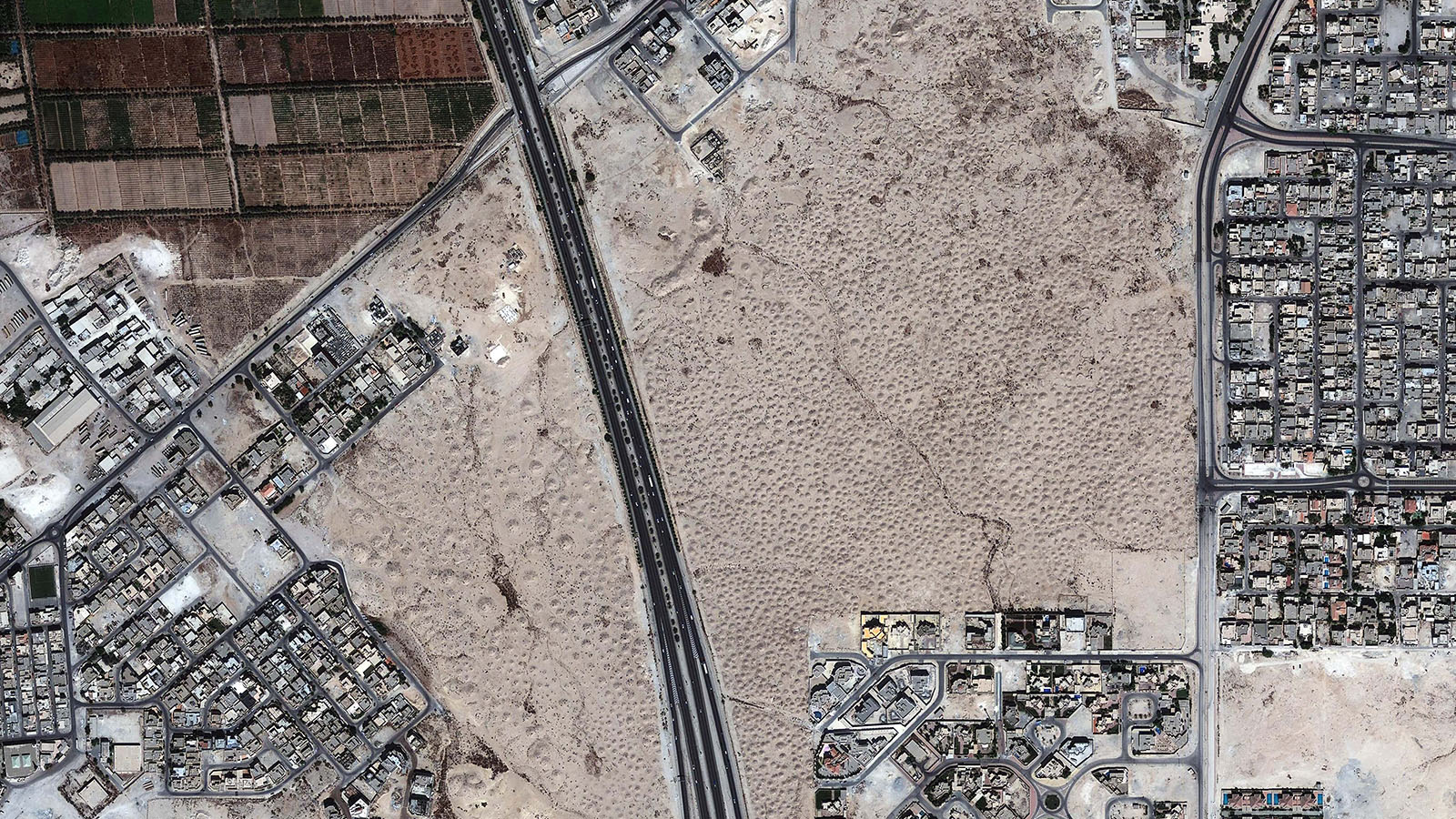
Author Masashi Abe
Researcher Japan Center for International Cooperation in Conservation Tokyo National Research Institute for Cultural Properties
Bahrain is a small island country in the Persian Gulf about as large as Tokyo's 23 special wards. Though the name Bahrain may conjure up such images as pearls, oil or the Formula One World Championship, there is one more thing that Bahrain is famous for -- that is, burial mounds. Bahrain has been known as the island of burial mounds since long time ago.
-
International Cooperation with Bahrain -- The Land of Pearls, Oil and Burial Mounds (I): A Study Tour on the Preservation and Presentation of Burial Mounds in Japan
Bahrain- The Land of Pearls, Oil and Burial Mounds
Bahrain is a small island country in the Persian Gulf about as large as Tokyo’s 23 special wards.
Though the name Bahrain may conjure up such images as pearls, oil or the Formula One World Championship, there is one more thing that Bahrain is famous for — that is, burial mounds.
Bahrain has been known as the island of burial mounds since long time ago.
Even though they have decreased in number due to development, it is said that Bahrain once had as many as 75,000 burial mounds.
In comparison with the number of burial mounds built in the Japanese Kofun period which is 150,000, you can see about as many as one half of the total number of burial mounds located across the Japanese archipelago are concentrated on the islands of an area as large as Tokyo’s 23 wards.
It is said no area but Bahrain has such a high density of burial mounds in the world.
-
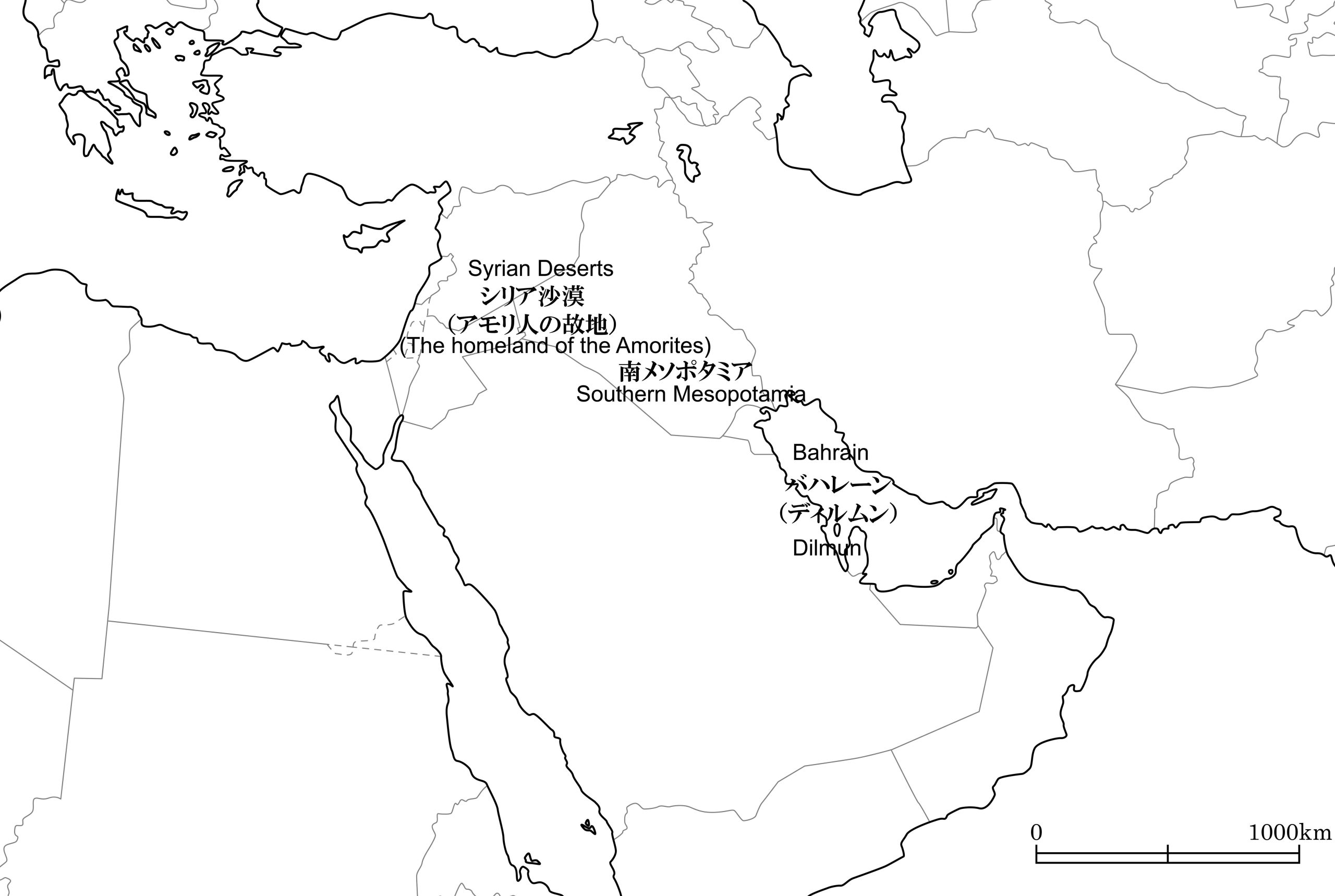
Geographical location of Bahrain
-
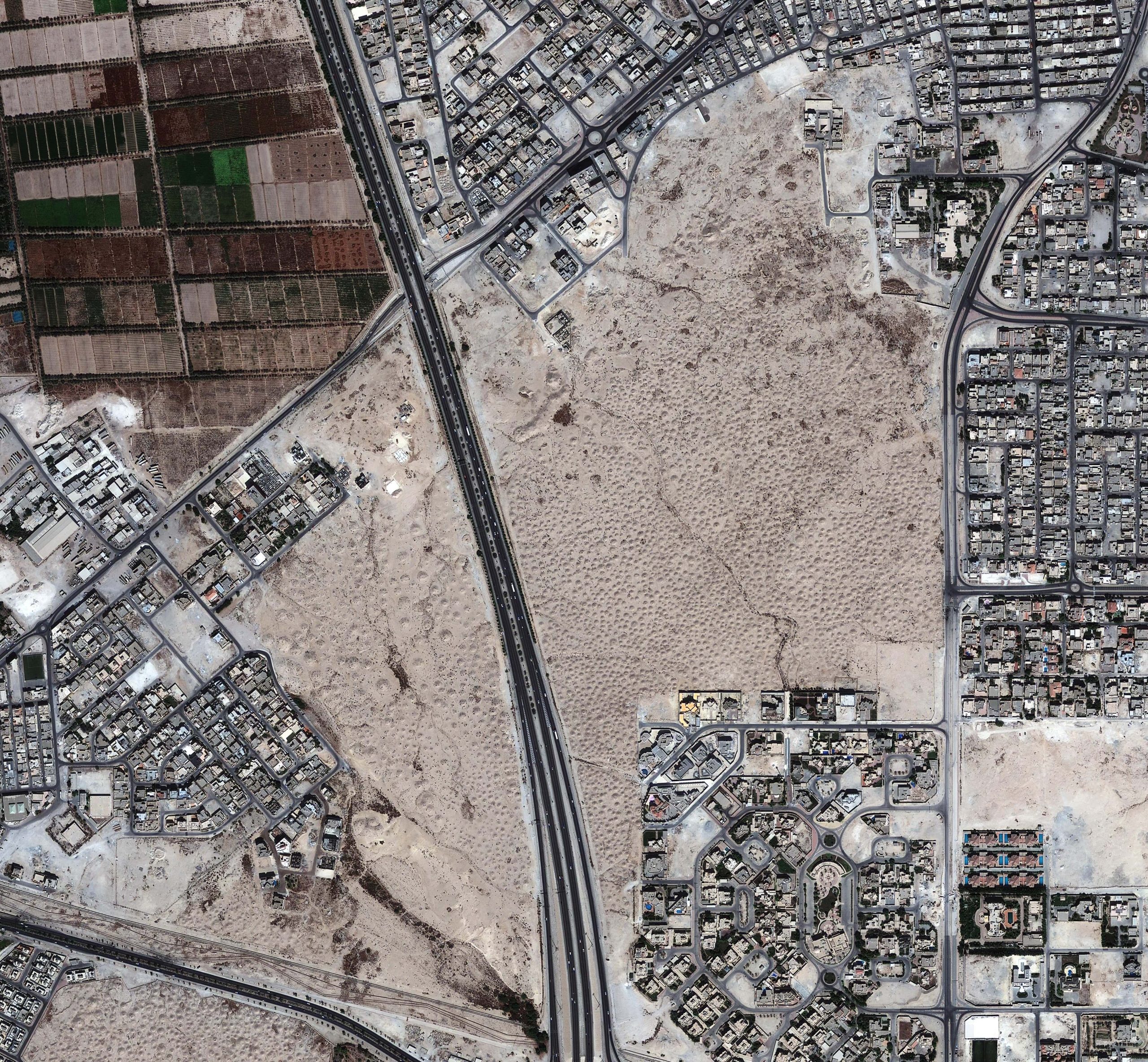
An aerial photo of Aali Burial Mounds. Innumerable burial mounds spread over the land. (Dr. Salman Al Mahari kindly provided this picture. )
-
-
Dilmun Merchants- Who Supported the Lifeline of the Mesopotamian Civilization
Most of these burial mounds were built in the period from around 2200 BCE to 1700 BCE, when Bahrain was called Dilmun.
At that time, the Mesopotamian civilization was flourishing in southern Iraq (southern Mesopotamia).
However, because southern Mesopotamia is a vast alluvial plain made of massive mud, the land lacked such resources indispensable for civilized life as metals, precious stones and other stone materials.
It was here that Dilmun merchants played an important role: they embarked on the great ocean and dominated the maritime trade linking Mesopotamia, Oman and the Indus, transporting into Mesopotamia large quantities of goods such as gold, silver, copper, tin, ivory, lapis lazuli, carnelian, pearls and ebonies.
The lifeline of the Mesopotamian civilization relied on Dilmun, who supported it by means of physical distribution.
-

Karzakkan Burial Mounds
-
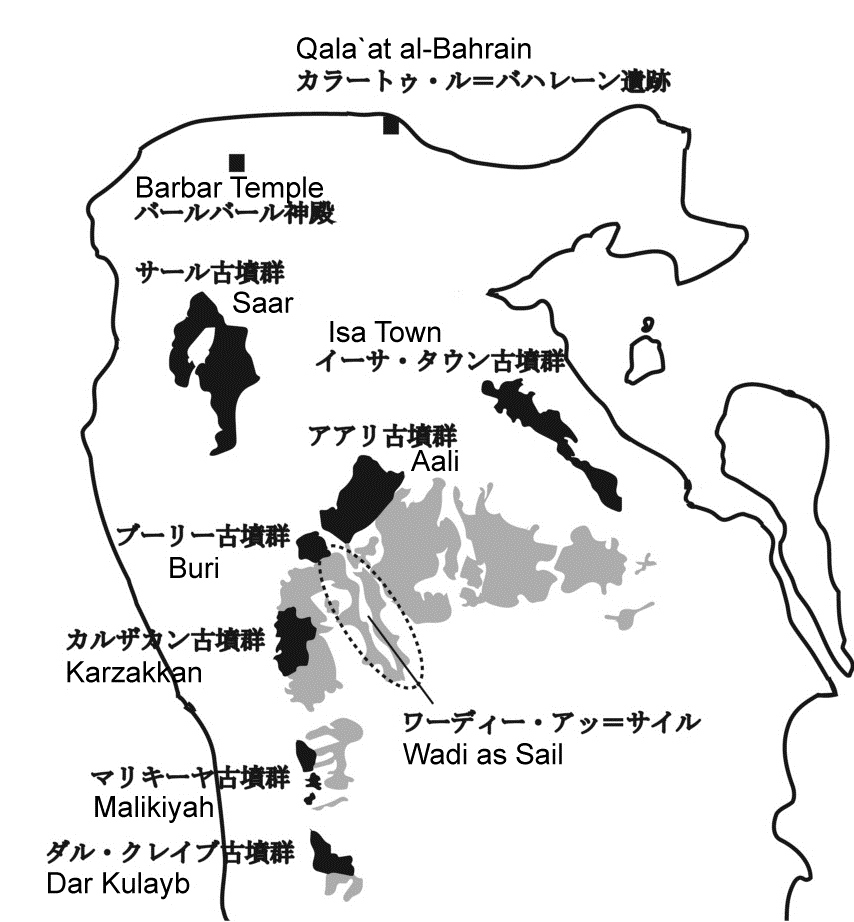
Archaeological sites in Bahrain related to Dilmun
-
-
Towards World Heritage Inscription of the Dirmun Burial Mounds
The burial mounds we find in Bahrain today are the tombs of these people of Dilmun .
Just as the Japanese government aims to have Mozu-Furuichi Kofungun tumulus clusters inscribed on the World Cultural Heritage list in 2019, the Bahrain government aims to have the Dilmun burial mounds inscribed on the World Heritage list in 2019.
Japan has been, in fact, cooperating with the Bahraini project, too.
In 2011, the Japan Consortium for International Cooperation in Cultural Heritage conducted a needs assessment survey in Bahrain for international cooperation, upon which the Bahrain Ministry of Culture expressed its wishes to send experts to Japan to study the cases of historical site preservation in Japan, because it had a plan to open an onsite museum upon the Cultural Heritage listing of the burial mounds.
-
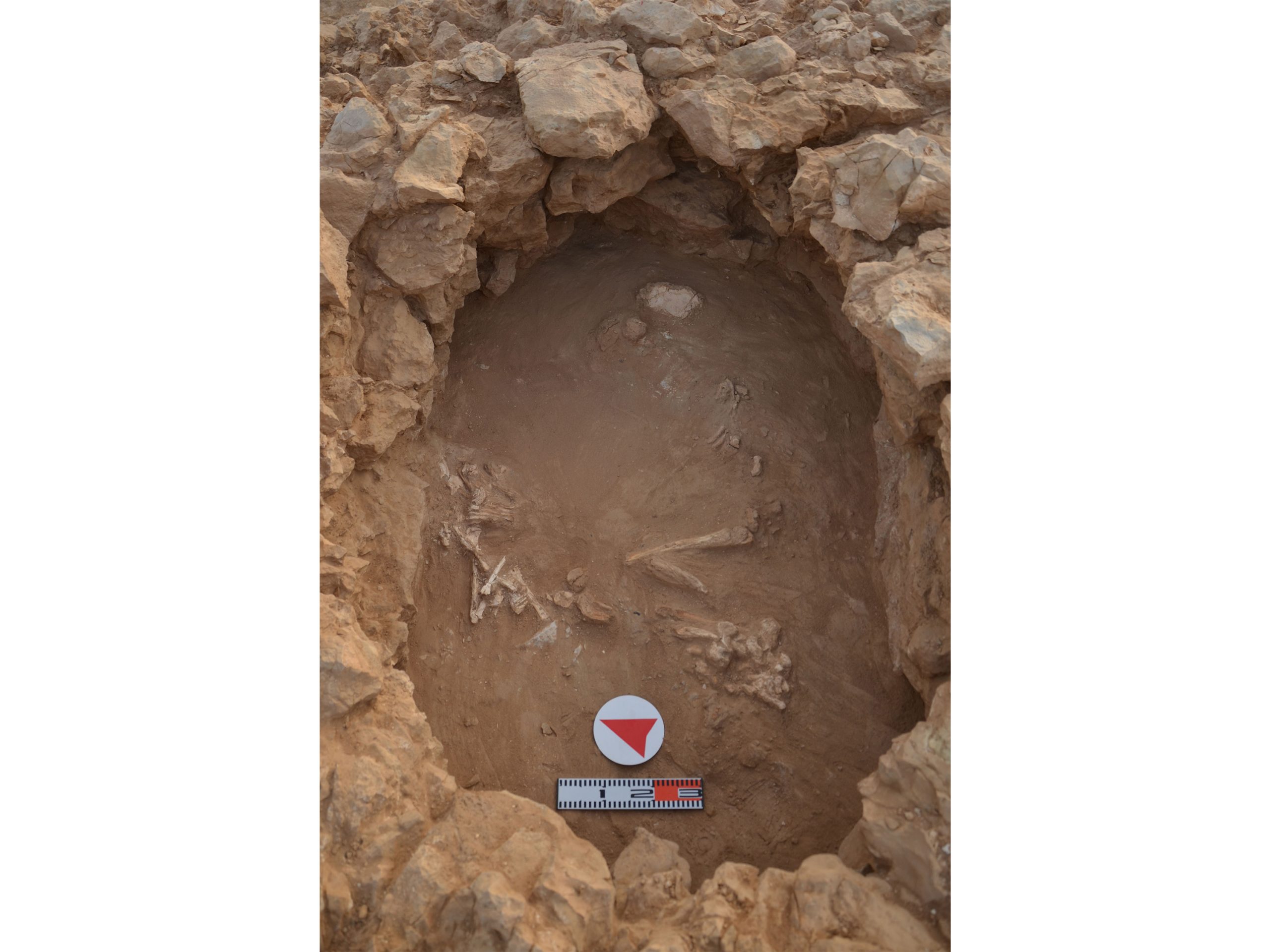
Ancient human bones unearthed from a Dilmun burial mound
-
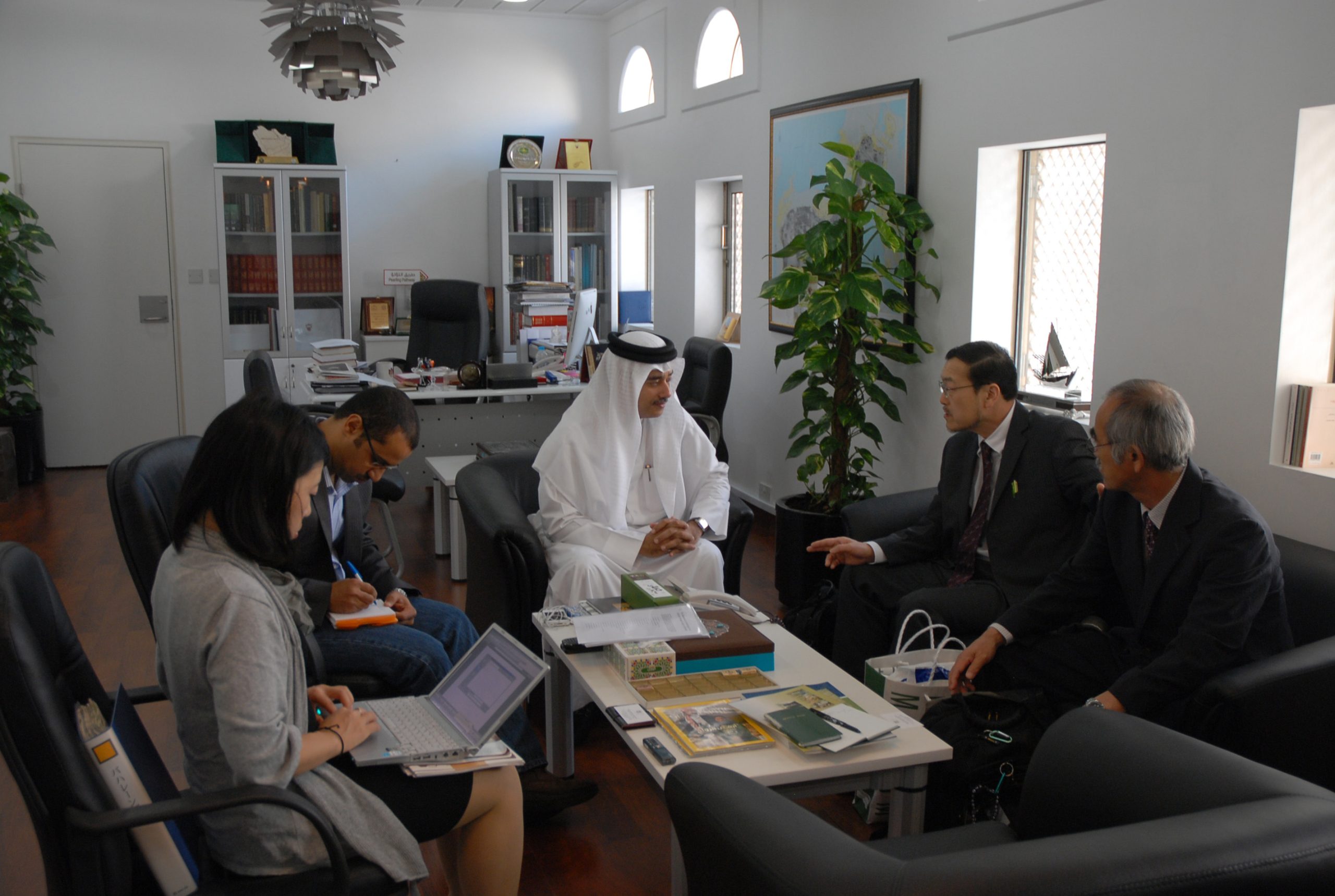
Visit for a needs assessment survey in Bahrain for international cooperation by the Japan Consortium for International Cooperation in Cultural Heritage
-
-
A Study Tour on the Preservation and Presentation of Burial Mounds in Japan
Thus, in the following year 2012, a study tour concerning the preservation and presentation of burial mounds in Japan was conducted inviting two experts from the Bahrain Ministry of Culture, which was funded by the Japan Foundation*.
From north to south — from Gunma Prefecture to Miyazaki Prefecture, they toured around important kofun parks, historical site parks and archaeological museums across Japan over the period of two weeks.
They seemed to be impressed particularly strongly by Saitobaru Archaeological Museum of Miyazaki Prefecture, which is known for having adopting universal design earlier than others.
I hope that what they saw on their visit to Japan will help them in some way or another, so that the burial mounds of Bahrain will be inscribed on the World Heritage list this year.
*Kiyohide Saito (Archaeological Institute of Kashihara, Nara prefecture) served as the leader of the study tour project.
-
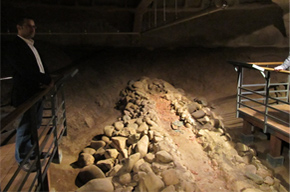
Study tour to the Saitobaru Burial Mounds by Bahraini experts
-
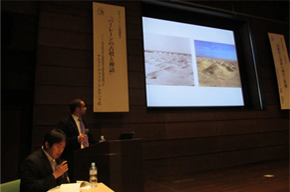
Lecture by a Bahraini expert at the Saitobaru Archaeological Museum of Miyazaki Prefecture
-

